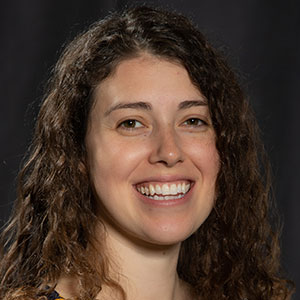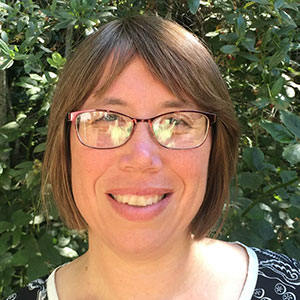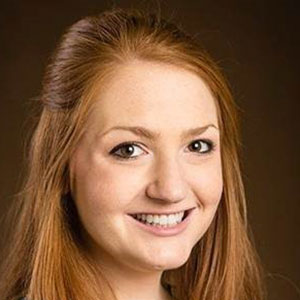Project-based Learning (PBL) presents a pivotal tool for schools, particularly small schools, and naturally lends itself toward building entrepreneurship skills in students.
PBL requires “the use of a project as the primary teaching tool and defines the positions of pupils/students as active actors in the learning process.”1 A critical aspect of PBL is a driving question that guides the students and can be answered only as they research and create their projects (see Sidebar 1).
At the end of the project, students must have an opportunity to share their knowledge, either through a celebration or presentation. This type of student-led approach creates a skilled, independent learner: “Research shows that students who have learned within a project-based model show greater intrinsic motivation for learning, express greater autonomy in learning, are more self-sufficient and possess better developed metacognitive skills, as well as greater autonomy compared with students who worked within a traditional model of instruction.”2 A student with these types of abilities will be well suited to entrepreneurship—having the drive to initiate and follow through on a business or idea to implement in the world beyond the classroom.
Review of Research on PBL
Research reflects the value of PBL for student development of practical skills and entrepreneurial dispositions. Katarzyna Łobacz and Ewa Matuska analyzed data from a study
conducted in Poland, Italy, and Spain, which sought to grow “entrepreneurial skills through the implementation of projects aimed at solving real problems using modern digital tools.”3 The researchers found the program positively affected students’ preparation for entrepreneurship.4 The project-based learning approach gives students an opportunity to not only learn theories but also to put their knowledge into action and develop attitudes along the way that they will need to succeed in the workforce. Łobacz and Matuska found that through their PBLs, the students they studied developed an aptitude for entrepreneurship by learning “transferable competencies” such as “effective time management,” “effective interpersonal communication and the use of feedback,” “teamwork and task coordination,” etc.5 They also concluded that students learned “technical competencies” like “storytelling supported with IT tools” through the implementation of their projects.6
While the previous study supports the hypothesis that PBL promotes entrepreneurship, other research relates specifically to the effectiveness of this teaching methodology in the elementary school classroom. In this study conducted in Serbia, Bojan Lazić, Jelena Knežević, and Sanja Maričić divided 3rd-grade students into two groups—a control group and an experimental group to examine the effect of PBL on mathematical achievement. While the control group was taught mathematics according to the traditional model, the experimental group was taught through projects that clearly connected to daily life.7
The researchers tested the students before and after the study. They found that the students from both groups scored similarly before the experiment. But when tested afterward, students from the experimental group achieved better scores than those in the control group.8 “[B]ased on the results obtained . . . the project-based model of work in mathematics education has caused a significant improvement of student performance in mathematics.”9
The same researchers also observed that “even students with the lowest marks [from the experimental group] achieved a significant improvement of performance after implementation of the project-based model.”10 They surmised that perhaps student improvement in the PBL groups was linked to the instruction being more interesting and enjoyable to the learners.11
If student improvement resulted from better engagement from instruction being linked to real-life scenarios, it seems likely that similar results would be obtained if testing was conducted in other subjects. Indeed, one research review of 20 studies concluded, “PBL can promote student learning and may be more effective than traditional instruction in social studies, science, mathematics, and literacy.”12 This research indicates that PBL would be a useful resource for teachers as they seek to equip their students with 21st-century learning skills.
Though studies reveal benefits from using PBL, the available research does not specifically examine the usefulness of this teaching methodology for small, multigrade classrooms. Shareeta et al. define multigrade as “two or more grades being combined and taught by a single teacher delivering instructions of multiple curriculum grades simultaneously.”13 As one Turkish study of small elementary schools found, the difficulties of multigrade classroom instruction are many. One challenge they found was that “planning and implementation are difficult processes in joint classrooms.” A teacher from the study stated, “We cannot plan an activity that will make all grades in the classroom participate. While dealing with one grade, others only wait.”14 Perhaps PBL could be part of the solution to this difficulty faced by small-school teachers.
Two teachers of small multigrade schools (Laura Bowlby in Oregon, Kalicia Clements in Michigan) found that they could successfully engage learners of all ages by teaching multiple standards simultaneously through Project-based Learning. Students not only gained knowledge in traditional subjects through PBL, but also had the opportunity to develop entrepreneurship abilities as they innovated in their projects.
Laura Bowlby’s Experience With PBL and Entrepreneurship in the Classroom
“My personal experience with PBL illustrates the richness of this teaching method for small schools and the possibilities it presents for inspiring student entrepreneurship and innovation.
“One project that I started with my 22 students (Grades 1-8) in 2019 at Madrone Adventist Elementary School in Cave Junction, Oregon, and recently implemented with my 19 students (Grades K-8) at Canyonville Adventist Elementary School in Canyonville, Oregon, was a young entrepreneurs’ fair. First, I created a driving, multifaceted question to guide the students: ‘How can starting a business earn me money and enhance my understanding of different people’s roles in my community?’
“To answer this question, the students had to create a business. At one-room schools, it was great to be able to involve the whole classroom together in this project. The PBL was adaptable for each grade level, with more detailed requirements for the older students. The students brainstormed several different job ideas and then had to choose from the ones they had innovated and write about their potential businesses. The writing requirement was different for each grade level.
“Once their business was identified, students had to create a name, logo, and business plan. As they created their business plan, they had to think about something that was most needed in their community or that many people would be willing to pay for. They also had to identify investors (parents or teachers) and their customer base and outline their finances. Finally, they had to share how they would grow due to this experience.
“The culmination of the young entrepreneurs’ project was a fair hosted for the community. In preparation for the fair, students advertised their products with an insert in the church bulletin and by posting flyers around town. The fairs were both hosted in the middle of town, one in an empty parking lot, the other at the city hall parking lot (see Sidebar 2). With involvement from chaperones, students were able to sell their wares and put their learning into action. Students made and sold items such as birdhouses, popcorn, natural mosquito and tick spray, Scentsy™ bags, fresh hot food, desserts, baked bread, furniture, and soap.
“I created a rubric on a four-point scale (emerging, developing, proficient, and exceeds) to guide students and make sure expectations were clear for the day of the fair (see Young Entrepreneur’s Rubric). The learners were advised to dress appropriately for a business owner, create a visually appealing space for their wares, etc.
“After selling their products and paying back their investors, students were asked to set aside 10 percent to pay for their booth space, 10 percent for tithe, and 50 percent for charity. The remaining 30 percent was to be split with their partners, if any. This illustrated to students the costs associated with running a business. Some students took home as little as $2, while others profited almost $400.
“Over the couple of months that students worked on the young entrepreneurs’ project, it made a big impact. The process involved math, language arts, and writing. Students also had to do research for their businesses and, for many of them, exercise engineering skills in building their products. The project also incorporated history as they learned about entrepreneurs and inventors to aid and inspire them as they created their businesses.
“Additionally, the fair connected the students and schools in both locations with their local communities. Students had positive interactions with community members who were their customers. Then, when students returned their tithe and gave to charity, various churches and institutions received checks from the schools.
“Through participation in the entrepreneurship PBL, students grew in their understanding of goods and services and the way money works in their society. They obtained a desire to participate in their own communities and contribute to them through the skills this project promoted, like business management and leadership. Students applied critical-thinking skills by figuring out what businesses would bring in the greatest cash flow based on the population of the community. They used their creativity to express themselves and take risks, trying out unique ideas. They collaborated with one another and with the larger community to make their businesses a success. As an extra bonus, the kids had a very good time!”
In small schools, using PBL to enhance the curriculum and drive learning is effective.15 Indeed, many successful small-school teachers have been teaching this way for years. Encouraging student leadership, differentiating the requirements (in rubrics) to meet the needs of the wide span of learners, and allowing for individual originality and ingenuity are just some of the benefits of PBL. Rather than PBL being something that small schools can contrive a way to implement, this methodology seems to naturally fit small schools’ needs.
Kalicia Clements’ Experience With PBL and Entrepreneurship in the Classroom
“PBL has also been an asset to the students, families, and surrounding community of our one-room K-8 school in Michigan. By using NAD standards-based learning through PBL, students can engage, at their own ability level, in a school-wide initiative to not only master grade-level objectives but also to gain useful life skills.
“One of my school’s favorite projects is our garden. The students learn how to start seeds indoors, measure seedling growth, and research individual plant needs, harvesting periods, and planting depth and spacing. Students collaborate in choosing plant types and designing the garden space each year. They illustrate their garden plan using graph paper and scale measurements based on their research regarding plant needs.
“This project inspires students to adopt part of the garden over the summer to ensure it receives good care, and it encourages them to return the following year to learn and benefit from the harvest and seed-collection process. It is rewarding to watch students comprehensively understand the life cycle of a garden. They can try foods fresh from the earth and learn about individual plants and how to harvest their seeds. They not only learn the importance of a garden, how to keep it healthy, and the benefits of delicious food, but also how to use items from the garden to create products for fundraising and donating to local businesses and community centers.
“The students learn how to use items grown in the garden to produce lip balm, healing salve, pumpkin butter, and old-fashioned soap. They study the healing properties of the natural herbs, flowers, and plants included in our products, and they are able to communicate this information as we share the blessings of our garden with our families and community.
“Students engage in entrepreneurship opportunities as they practice basic financial skills by determining the long-term costs and profit, learning how to build connections with small businesses, and speaking knowledgeably about their products. Additionally, students participate in forward-thinking through planning other projects that promote entrepreneurship development, such as making decorative pillows or even colorful playdough for local daycare centers.
“Through these projects, the students also attain objectives in science, mathematics, language arts, health, and art. It is incredible to participate in student learning as they contribute to projects like our garden.”
Conclusion
In the multigrade setting especially, PBL is a key component to student success, entrepreneurship, a love for learning, and lifelong skills. Both teachers who contributed to this article, Laura Bowlby and Kalicia Clements, found this teaching methodology to be an effective way to instruct all students, from multiple grades, in one-room classrooms and to inspire their students’ excitement for learning and innovation. Projects like the fair and garden described earlier illuminate the depth and variety of instruction that small-school teachers can bring to the classroom through planning opportunities such as these.
While this article relays positive experiences from the perspective of the teachers with PBL, more research could be done to provide data to support PBL’s value for small schools.16 The usefulness of PBL to multigrade classrooms could perhaps be examined further through student surveys. Or a study could be conducted comparing student achievement scores from small Seventh-day Adventist schools in the NAD that often utilize PBL versus small NAD schools employing mostly traditional instruction methods.
While research like this would take time to collect and analyze, the experiential evidence we already have indicates enough reason to keep using PBL in small schools. Through its continued implementation in small schools and the study of its effectiveness, we believe our students will develop into thriving citizens.
This article has been peer reviewed.
Recommended citation:
McKenzie Wallace, Laura Bowlby, and Kalicia Clements, “Project-based Learning and Entrepreneurship in Small Schools,” The Journal of Adventist Education 84:3 (2022): 40-47. https://doi.org/10.55668/PAKC4319
NOTES AND REFERENCES
- Katarzyna Łobacz and Ewa Matuska, “Project-Based Learning in Entrepreneurship Education: A Case Study-based Analysis of Challenges and Benefits,” Przedsiębiorczość- Edukacja [Entrepreneurship-Education] 16:2 (2020): 88. doi.10.24917/20833296.162.7.
- Bojan D. Lazić, Jelena B. Knežević, and Sanja M. Maričić, “The Influence of Project-based Learning on Student Achievement in Elementary Mathematics Education,” South African Journal of Education 41:3 (August 2021): 1, 2. doi.org/10.15700/saje.v41n3a1909.
- Łobacz and Matuska, “Project-Based Learning in Entrepreneurship Education,” 89.
- Ibid., 96.
- Ibid., 91.
- Ibid.
- Lazić, Knežević, and Maričić, “The Influence of Project-based Learning on Student Achievement in Elementary Mathematics Education,” 3.
- Ibid., 6.
- Ibid.
- Ibid.
- Ibid., 7.
- Sally Kingston, “Project Based Learning and Student Achievement: What Does the Research Tell Us?” PBL Evidence Matters 1:1 (2018): 2: http://bie.org/x9JN.
- Mariyam Shareefa et al., “A Challenge Made Easy: Contributing Factors for Successful Multigrade Teaching in a Small School,” Pertanika Journal of Social Sciences & Humanities 28:3 (September 2020): 1,643.
- Baris Kalender and Erol Erdem, “Challenges Faced by Classroom Teachers in Multigrade Classrooms: A Case Study,” Journal of Pedagogical Research 5:4 (December 2021): 83. doi.10.33902/JPR.2021473490.
- While PBL is effective in enhancing student learning, there may be challenges in implementing it for teachers working within the context of a nationally mandated curriculum. Teachers should work with their district (or its equivalent) to ensure projects in a PBL format fit within their mandated curriculum. Projects can be written to match district, state, or national standards. One article written about PBL in South Korea references the difficulties of implementing this teaching methodology with national curriculum requirements and other pressures, while also highlighting the value of offering creative projects for students. See Buck Institute for Education, “Breaking With Tradition, Korean Teachers Explore PBL,” PBL Works (n.d.): https://my.pblworks.org/resource/blog/breaking_with_tradition_korean_teachers_explore_pbl.
- Research findings on the effectiveness of PBL in large schools have been mixed until two recent large studies conducted by the University of Southern California’s Dornsife Center for Economic and Social Research and Michigan State University (2021): https://cesr.usc.edu/sites/default/files/Knowledge%20in%20Action%20Efficacy%20Study_18feb2021_final.pdf, and the University of Michigan in collaboration with the Michigan Department of Education (2018-2019): https://mlpbl.open3d.science/techreport. Together, these two studies assessed the performance of more than 6,000 students throughout the United States and across all socio-economic backgrounds and found sustained gains in academic performance. Similar studies would help strengthen support for use of PBL in small schools.













